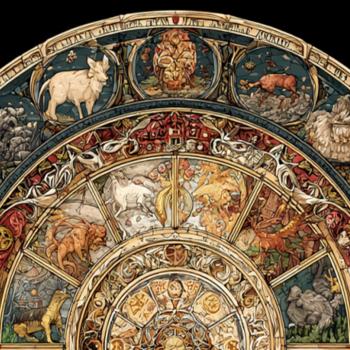Before Creation, Love Was Waiting
This gospel asks the question, “What was God doing before creating the universe?” Answering this, the text imagines Christ—the Divine Word—as existing in a fullness of love, ready to make the Father known. From this fullness, God prepared a way for creation to find its way back, waiting with infinite patience and love. This means that the “solution” to humanity’s separation from God was in place before the problem ever began. The cure was woven into the very fabric of existence.
The Mystery of Error
One of the gospel’s big metaphors is “Error.” This isn’t just about “wrong” or “sin.” Here, Error refers to humanity’s inability to fully know God’s essence. In our ignorance, fear takes root, creating a dense fog that distorts our perception. The text says, “Ignorance of the Father brought about terror and fear.” That fear becomes the “error” separating us from the experience of God.
Unlike some Gnostic texts that blame this on an “evil” Demiurge, the Gospel of Truth doesn’t attribute it to an outside force. Instead, it portrays Error as an internal struggle, a condition we bring upon ourselves, which the knowledge of Christ can dissolve.
Christ as the Fruit of Knowledge
The gospel’s poetry really shines in describing Jesus’ death on the cross. Instead of emphasizing punishment or sacrifice, it reframes the cross as the “Tree of Knowledge of the Father.” The death of Jesus reveals the hidden “fruit” humanity has longed for—the understanding of God’s love. When Christ was “nailed to a tree,” it became the fruit of divine knowledge. Eating this “fruit” leads to awakening and healing, much like the enlightenment seekers experience when discovering their oneness with the Divine.
Redemption as a Return to Unity
The Gospel of Truth teaches that humanity’s sense of separation is a mirage. As it unfolds, it speaks of an intimate reunion where humanity finds its way back to God and to each other. This gospel suggests that all things, all beings, find their true place in God, in the fullness of a reality that’s always been there.
This isn’t an “us versus them” teaching. There’s no division between “believers” and “outsiders.” Instead, it’s a vision where even those in “ignorance” are gradually drawn to God, returning to a state of unity where the Divine “knows and is known” in all things.
A Living Book Written in Our Hearts
The Gospel of Truth uses a beautiful metaphor of Jesus as a “living book.” His life and teachings weren’t just instructions; they were God’s love in flesh, an eternal message engraved on the hearts of humanity. The gospel describes this as “the living book of the living,” a testament that God’s presence is not limited to texts or rituals but lives within us, accessible to everyone.
A Gospel of Non-Duality
The text concludes with a vision that’s pure non-duality, a return to unity where God, humanity, and all of creation are in harmonious oneness. “Do not strengthen barriers that are falling away,” it urges. Our journey is not about reinforcing separation but about letting go, allowing the light of Divine love to dissolve every illusion of division.
This gospel calls us to remember that all of us—even those who seem farthest from knowing God—are deeply loved and ultimately drawn back to Divine connection.
In essence, it’s an invitation to embrace the joy and peace of knowing that we are one with God, eternally part of the fullness of Divine love.
NEXT WEEK: We’ll begin our exploration into the lost Gospel of Mary.
**

The newest book from Keith Giles, “The Quantum Sayings of Jesus: Decoding the Lost Gospel of Thomas” is available now on Amazon. Order HERE>
Keith Giles is the best-selling author of the Jesus Un series. He has appeared on CNN, USA Today, BuzzFeed, and John Fugelsang’s “Tell Me Everything.”
He co-hosts The Heretic Happy Hour Podcast and his solo podcast, Second Cup With Keith which are both available on Spotify, Amazon, Apple, Podbean or wherever you find your podcast fix.















